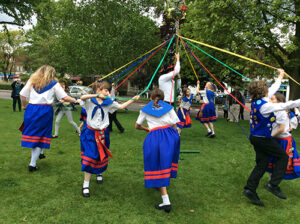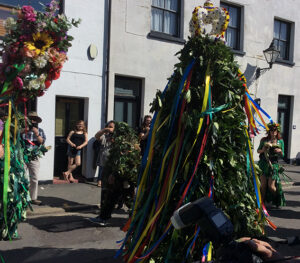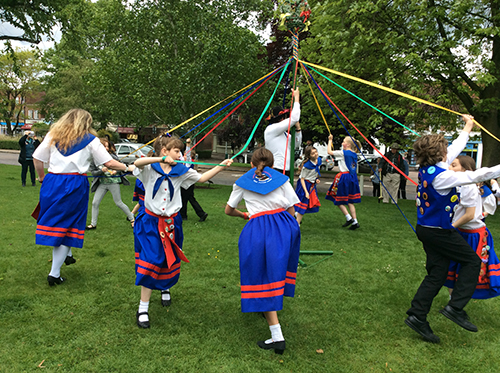With the sun shining brightly, today is the day to welcome the summer!
People have been celebrating this since the Roman times. Floralia, a Roman festival lasting a week around this time, celebrated Flora, the goddess of flowers and fruit, with theatrical performances, spectacles, throwing beans and seeds and hares and goats running around.

Later on, the Catholic Church selected 1st May to observe the May devotions to the Blessed Virgin Mary, crowning her head with flowers. This is also a feast day of St Joseph, Mary’s carpenter husband and surrogate father of Jesus. The church also appointed the 1st May as the feast of St. Philip and St. James, but still could not suppress the pagan jollities associated with this by country folk.
The celts celebrated Beltane (“lucky or bright fire”) on the evening of 30th April. If your cow jumps over the fire on that day, its milk will be protected from the fairies! People had been leaping over the fire until the early 19th century, celebrating Beltane. Many May Day folk traditions grew around this day, still celebrated as a festival of new life and fertility in Europe and America. Maypole is a tall post decorated with flowers and greenery at the top. It was erected on the village green as a focal point of May Day festivities. The tallest one in Yorkshire is said to be 30 metres high. People hold ribbons coming off it and dance around, forming intricate patterns – the real skill is dancing the other way round, unwinding it in the correct order!

A May Day parade is often headed by the May Queen – a girl dressed in white and adorned with flowers. From 16th century onwards people would make garlands decorated with leaves and flowers, to be carried during a parade and for dancing at the festivities.
Chimney sweeps went even further. They would create a leaf decoration so big, that it concealed a man inside it, – it became known as Jack in the Green, who often headed the parade and inspired merriment and mischief. Jack in the Green, representing the Green Man, a symbol of fertility, echoing back to the times when our ancestors worshipped trees.

The tradition died during the late Victorian times, but was renewed in 1983, and now Hastings Jack in the Green Festival is an annual celebration of English folk traditions and dancing. It starts with Morris dancers welcoming the dawn at 5am on 1st of May, followed by a weekend of Morris dancing around the town, parties and concerts and culminating with the parade of Jack in the Green, his colourful attendants and all the Morris dancers, – as seen in our film!
Young Miscellany At Hastings 2017-19
https://en.wikipedia.org/wiki/Beltane
https://en.wikipedia.org/wiki/May_Day
https://www.historic-uk.com/CultureUK/May-Day-Celebrations/
https://media.efdss.org/resourcebank/docs/RB094BritishFolkCustomsMay.pdf


